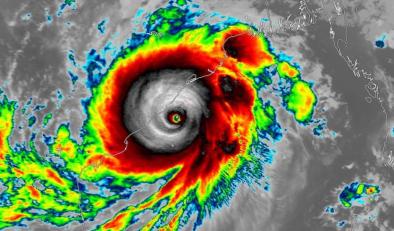Cyclone Fani and the impact of global warming captured by NASA

As Cyclone Fani strengthens and people are evacuated from India’s eastern coast, the evidence of global warming can be seen in the images captured from outer space.

NASA Worldview, Earth Observing System Data and Information System (EOSDIS)
The picture captured using the MODIS instrument aboard the National Aeronautics and Space Administration's (NASA) Terra satellite—launched on 18 December, 1999—shows how the storm is growing in size.
...
The head of the Indian Meteorological Department told The Hindu, "This is a cyclone that's forming due to the warming of the Bay of Bengal basin...with global warming we have to be prepared for such occurrences and take precaution accordingly."
...
Sarat Chandra Sahu, the Director of the Center for Environment and Climate at the SOA University told indiaclimatedialogue, "Because of global warming, sea surface temperature remains higher in the Bay of Bengal leading to the generation and intensification of cyclonic systems. The southern coasts of Odisha experience cyclonic storms more frequently since the Phailin cyclone of 2013."
Ajay Singh, a climate change researching with the Indian Institute of Technology Bombay, agrees in his study published in Science Direct stating, "Overall, the impact of global warming on the climate of India is clearly visible in the form of increased frequency and intensity of most of the extreme weather events."
The Indian Ocean in particular has been warming faster than any tropical region on the planet over the past century according to the Climate Research Lab in IIT Madras. So it ends up that the Indian Ocean is also the largest contributor to global ocean surface warming.



